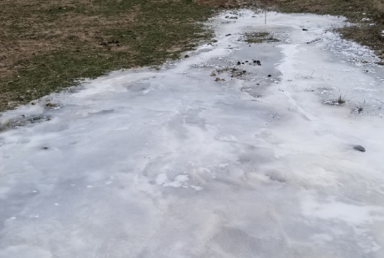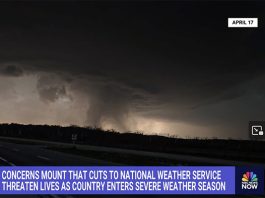In the last week or so, I’ve received several inquiries on water systems from producers trying to diagnose pump issues or other problems. I guess I just couldn’t be left out of that crowd because I now have a leak in an area where I had moved some soil around late summer.

Sometimes trying to figure out exactly what is going on with a leak can be difficult. An example of that is trying to find a leak in a long pipeline run going down a hill. The leak is most likely not where the water is coming to the surface, but where it found the easiest route out. The source is quite often close to the actual elevation of the leak, very similar to the workings of a spring. If the pipeline is three feet deep, then start looking about three feet in elevation uphill from the leak. Sometimes you are lucky, especially if it is on relatively flat ground and the water just surfaces from the same spot.
It is always good to adhere to good installation practices when installing pipeline. Before covering up a newly installed pipeline, it is always best to pressurize it for a day to check for leaks before burying it. If you have tees going off those lines, it never hurts to write down reference points, take a GPS point and or picture for later reference before covering it all up That has paid off for me more than once, especially when I wanted to add on to the system. I like to install a tee with a short stub of pipe on it for any spot where I might want to add on in the future. That stub of a pipe is a lot easier to connect to than having to splice in a tee after the fact.
The next thing I highly recommend is installing some shut-off valves. Just like switches on an electric fence system, shut-off valves do two valuable things; they help you narrow down where the problem is and then allow you to be able to just shut off that portion of the system. I prefer ball-type shut-off valves. They take a lot of abuse and the handle on them is normally very effective for shutting off with a tool from ground level. For most smaller ball valves, a piece of 1.5 or 2 inch PVC pipe can be notched and used as a handle to turn these valves off and on from the surface.
The shut-off valve should be installed at the same depth of the pipeline. A piece of 4 or 6 inch schedule 40 PVC pipe can be then installed over the valve. Notch out the lower end to fit over the pipe, dig down a little below the valve and backfill with some river gravel or large stone to provide a little drainage, and then place a cap on top of it to keep debris out and the valve clean. I put a small piece of foam insulation in the lid to help retain any possible geothermal warmth during the cold months. If you drill a small hole (1/8 inch) in the lid, you will find it makes getting the lid off easier and you can also run a string up through it with a knot on it to keep from losing that foam piece. Aluminum bubble-wrap insulation is also good.

Water systems that are put in above the freeze line, temporary or seasonal systems, need to be drained prior to deep freeze temperatures. For all systems that are not temporary or seasonal, that depth varies some, but it needs to be below freezing levels. It is normally recommended that the minimum depth be at least 3 feet for most of southern Indiana and up to 4 feet for the northern part of the state. If the pipeline is going under a road, lane, or an area with limited cover such as a barn lot, it is advisable to run it a foot deeper.
We talk about forage residual and residue quite frequently when it comes to forage management, but it is also important for the water lines. That sod layer on top the soil is actually very good insulation. If you have to dig a hole for some reason in the winter, you don’t choose a spot where the soil is bare (hopefully there is no bare soil), but rather a spot where there is heavy sod. I’m confident that if I had had my normal cover on that area of my leak, I wouldn’t have had a problem. I will procrastinate a day or two with that portion of the watering system shut-off in hopes that the weather will warm up a little.
I really like working with schedule 40 PVC pipe. It is fairly easy to splice into and fittings are easy to glue together, as compared to other types of pipe. But on rare occasions, especially under very adverse cold weather conditions and either not deep enough or lacking sufficient insulation, the freezing and thawing of the soil can occasionally pop a joint. The section where I have the problem with the pipe is at least 36 inches below the surface…but limited ground cover on that spot. I had moved some soil to divert some water and just didn’t get enough fall growth back on it. I’ll throw the weather under the bus, too dry when I needed to get some good growth, and now too dang cold!
Back to the subject of shut-off valves. If you are on municipal water, then being able to shut off a leak as soon as possible will certainly save you money. You and or your livestock are still going to need water, so hopefully any issues are narrowed down to a particular tank, hydrant, or specific water line so you can use another tank or system until that problem area is fixed. If you are using a well, the pump will be cycling a lot more often than normal if you have a leak. If the leak is bad, it will run almost constantly. If you don’t know where the leak is, then shut off valves to different parts of the system until the pump is working normally, not losing pressure. That will help narrow the search down.
I’m glad that we don’t have winters this cold every year. It is a good reminder to make sure to install systems for all types of weather, have a water contingency plan, and of course, maintain that vegetative cover for multiple reasons.

Most livestock prefer water between the temperatures of 37 and 65 degrees Fahrenheit. Cows will consume a fair amount of snow, especially if they are grazing stockpiled forages or winter annuals covered with it. Could it be the only source of water in some cases? This is a good question and the answer would probably begin with the words, “it depends.” The moisture content of what the cattle are grazing and their personal water needs play a big part here, with dry (non-lactating) cows, snow probably most likely is sufficient. But, if water is available…I’ve never seen them turn it down which tells me they still prefer to be able to drink some, and liquid water (or warmer water) utilized won’t require as much energy.
When planning ahead, especially thinking about what you might need or like to do for the next grazing season or winter, consider contacting your local Natural Resource Conservation Service (NRCS) office for assistance on planning and possible financial assistance.
Keep on grazing!





We seldom freeze here, but gophers can quickly fill the inside of 6″ PVC valve covers and putting gopher wire or hardware cloth under the bottom really slows them down.
Comments are closed.